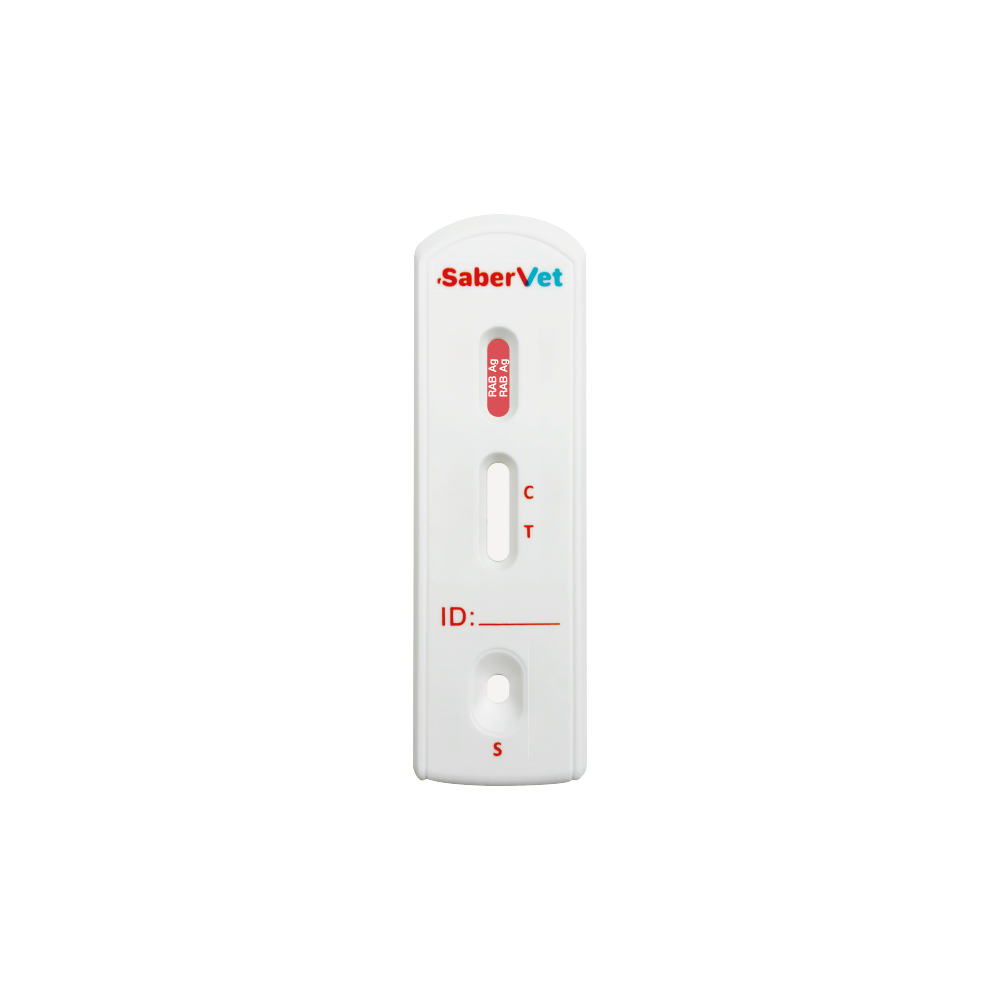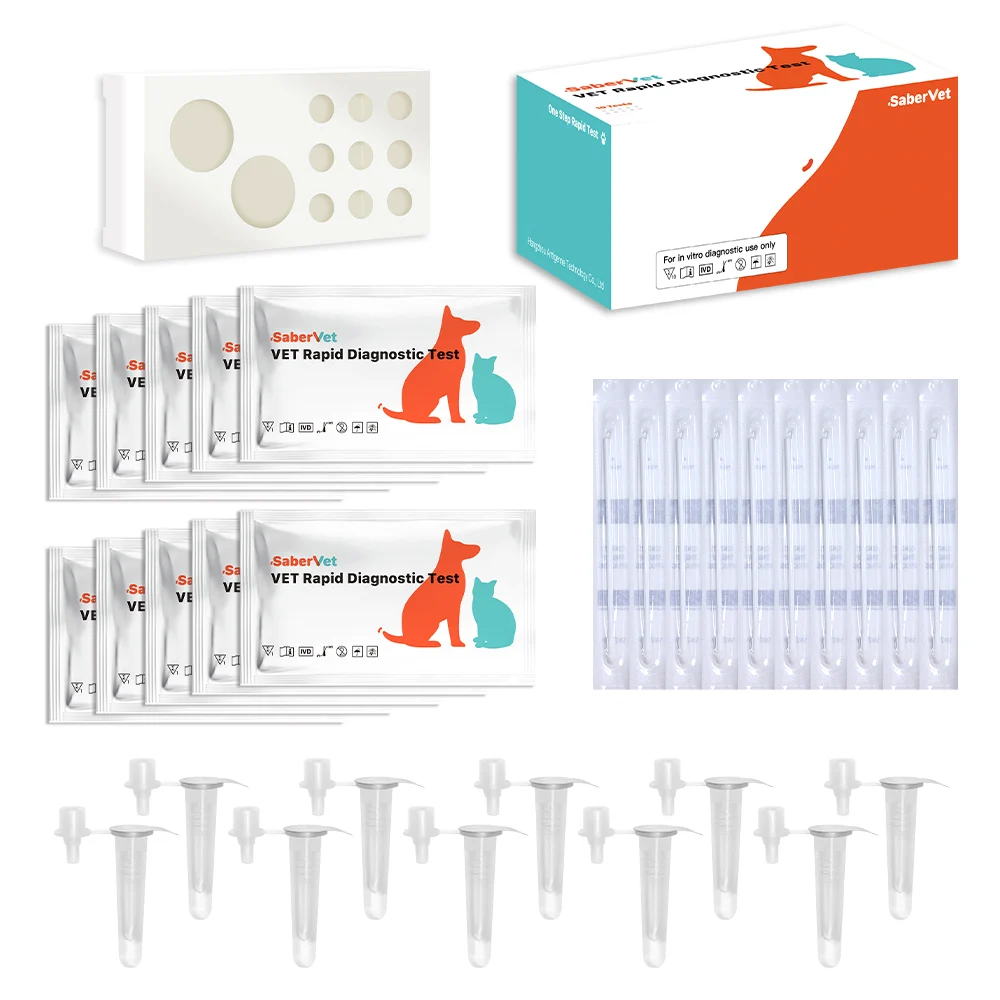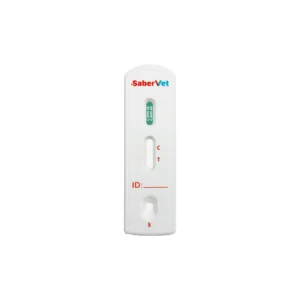Descripción
Contenido
| Componente | 10T/Caja |
| Dispositivo de prueba | 10 piezas |
| Hisopo | 10 piezas |
| Tampón | 10 piezas |
Especificaciones
| Nombre del producto | SaberVet Rabies Antigen Rapid Test |
| Marca | Sabervet |
| Número de modelo | 1091182410 |
| Muestra | Secreciones |
| Aplicación | Diagnóstico veterinario |
| Sensibilidad | 99.80% |
| Especificidad | 97.69% |
| Certificado | GMP & ISO9001 & CE |
| Tiempo de ensayo | 10 minutos |
| OEM&ODM | Disponible |
| Vida útil | 3 Years |
Operación
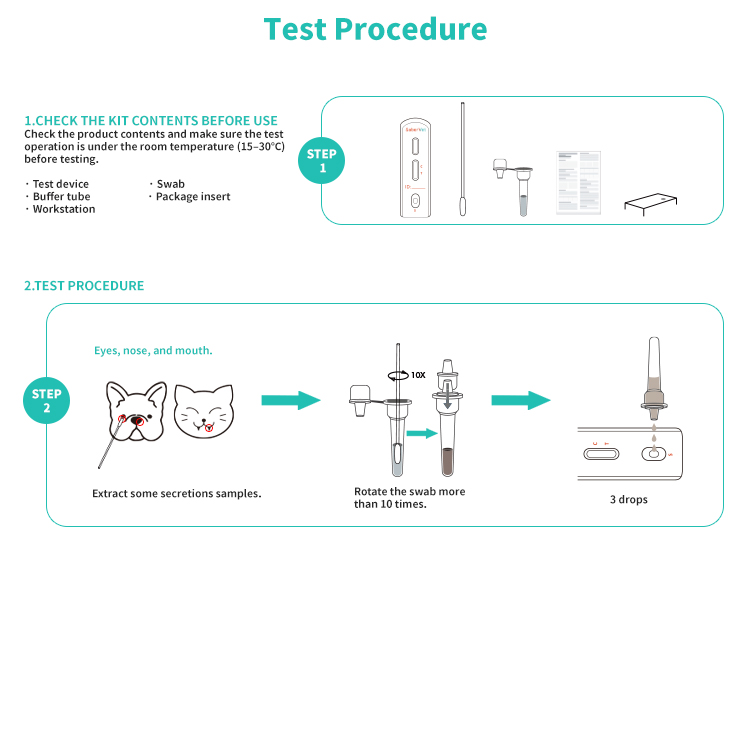
Resultados
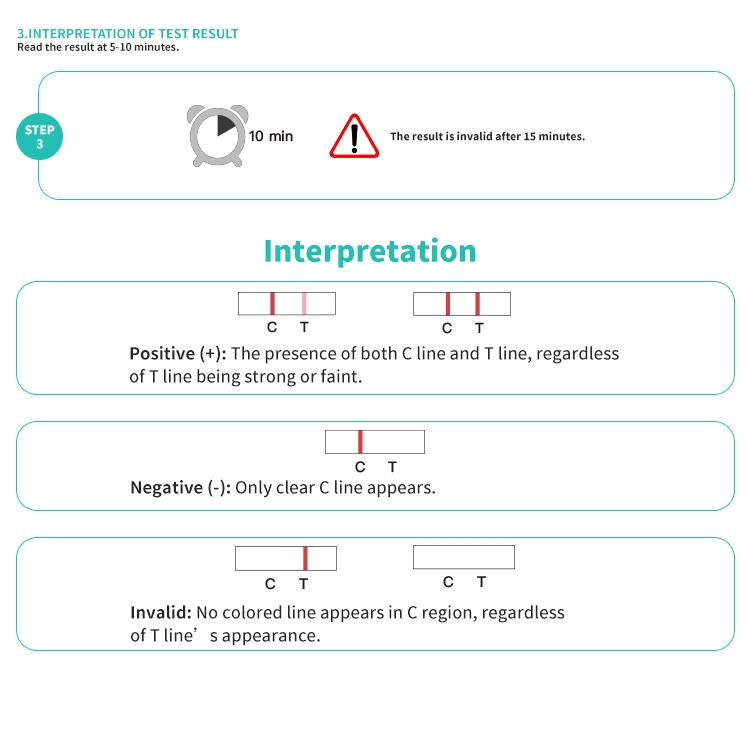
El virus de la rabia pertenece a la familia de los elastovíridos, del género Rabies virus. Las partículas del virus tienen forma elástica, con un diámetro de unos 75 nm, y están encapsuladas en una cápsula como virus ARN. La infección por el virus de la rabia causa la enfermedad.
Síntomas clínicos de la rabia
La rabia, también conocida como hidrofobia, es una zoonosis virulenta causada por el virus de la rabia, que tiene una amplia gama de infecciones, los seres humanos y diversos mamíferos de sangre caliente son susceptibles a la infección. Si se presentan signos neurológicos clínicos, se produce la muerte en casi 100% de los casos.
Dogs with rabies disease will show a more specific expression of terror and squinting, especially when attacked again by external stimuli. In the late stage of rabies, the patient's consciousness gradually disappears, the body will gradually lose weight, will show fear of water, dyspnoea, jaw droop and other characteristics, and there is a wild biting behaviour, and finally will be due to respiratory distress leading to central failure or paralysis and death.
Las personas que padecen rabia mostrarán inicialmente manía, miedo al agua, sudoración excesiva, lagrimeo, pulso acelerado, fiebre, pupilas dilatadas y dificultades respiratorias y pérdida de autocontrol, etc., y más tarde se deberá a un fallo nervioso central o parálisis coma o muerte.
Transmission of Rabies
Traumatic contact transmission
If scratched or bitten by rabid animals or suspected rabid animals, or contacted with rabies virus-carrying animals and their saliva or blood in the broken skin or mucous membrane, rabies virus can enter into the body through the broken place, and the traumatic contact transmission is the more common way of transmission.
Respiratory transmission
Aerosols of rabies virus may be found in the burrows of rabies virus-carrying animals. If inhaled after entering a burrow, rabies virus can be transmitted through the respiratory tract.
Transmisión por vía digestiva: El consumo de alimentos infectados por la rabia, como la carne y sus productos procedentes de animales enfermos, también puede provocar la transmisión de la rabia.
Clinical diagnosis of Rabies
Aislamiento y cultivo del virus: Se recoge tejido cerebral fresco de animales enfermos tras su muerte, y el fluido tisular se inyecta en ratones lactantes o se inocula con tejido celular para su cultivo y amplificación, y las partículas víricas se detectan mediante tecnología de inmunofluorescencia. Este método es adecuado para confirmar el diagnóstico de animales muertos sospechosos de estar infectados.
Técnica de anticuerpos fluorescentes: La técnica de anticuerpos fluorescentes (FAT) se refiere al uso de tinción con anticuerpos fluorescentes de cortes de tejido cerebral fijados en fijador de acetona para determinar la presencia de partículas víricas o inclusiones víricas en cortes de tejido cerebral mediante microscopía de fluorescencia.
Direct Fluorescent Antibody
Direct Fluorescent Antibody (DFA) is the "gold standard" for laboratory diagnosis of rabies and is accredited by the World Organisation for Animal Health (OIE). The method involves fixing brain tissue slices from suspected diseased animals and binding them with fluorescein isothiocyanate (FITC)-labelled monoclonal antibodies to the rabies virus, which can be directly observed by fluorescence microscopy to determine the viral particles.
Rapid immunohistochemistry
Rapid immunohistochemistry (dRIT) is mainly used for the qualitative detection of rabies. The method mainly collects brain tissue samples from suspected diseased animals, and after specific binding with specific rabies virus monoclonal antibody, after staining, the presence of virus particles can be directly observed under the light microscope to determine whether rabies is infected or not.
Enzyme-linked immunosorbent assay
Enzyme-linked immunosorbent assay (ELISA) makes use of the principle of specific binding of antigen and antibody to determine the negativity and positivity of the pathogen by observing the degree of colour reaction.
Nucleic acid detection technology
Nucleic acid detection of rabies virus usually adopts RT-PCR technology to amplify the target gene fragment, and judgement is made according to the amplification results.
Prueba rápida de anticuerpos antirrábicos
Antigenne ha desarrollado una prueba rápida de anticuerpos de la rabia para muestras de saliva/líquido cefalorraquídeo, que puede utilizarse como medio eficaz para que los usuarios controlen el virus de la rabia.
